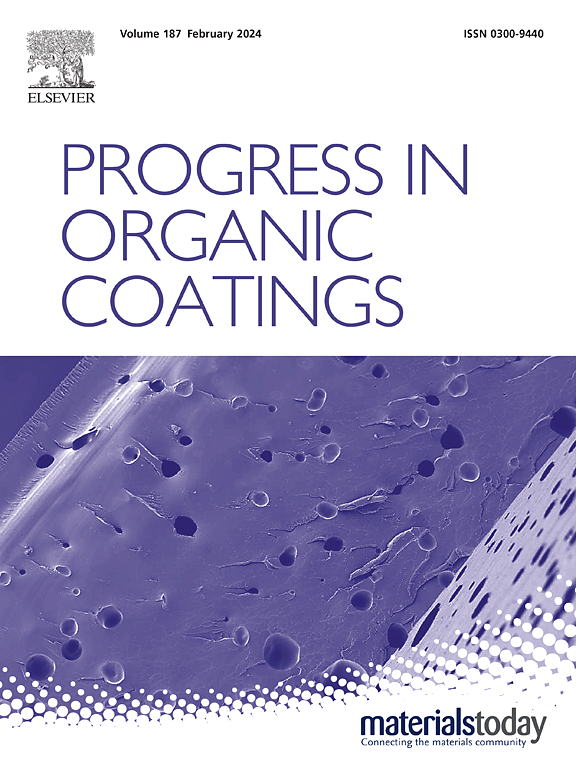洞察挥发性存在的环氧胺涂料使用纳米热分析
IF 7.3
2区 材料科学
Q1 CHEMISTRY, APPLIED
引用次数: 0
摘要
热固性聚合物被广泛用作保护性有机涂层的基质,通常添加溶剂来调节粘度和控制干燥时间。虽然大多数溶剂在固化过程中迅速蒸发,但众所周知,在基体中经常保留一定程度的残余溶剂。在这里,我们研究了溶剂保留对使用试剂级材料和简化的工业环氧酚醛胺配方组装的定义良好的模型涂层的局部热性能的影响。对于环境固化体系,传统的DSC分析无法检测到溶剂的存在,而纳米热分析(NanoTA)可以提供模型环氧胺体系中聚合物-金属界面溶剂保留加剧的证据,而在工业涂层中,可以检测到多个转变温度,对应于网络中的溶剂混合物。本文章由计算机程序翻译,如有差异,请以英文原文为准。
Insights into volatile presence within epoxy amine coatings using nano-thermal analysis
Thermoset polymers are widely used as the matrix in protective organic coatings, where solvents are commonly added to adjust viscosity and control drying times. Whilst the majority of solvent evaporates rapidly during the curing process, it is well-known that some degree of residual solvent is often retained in the matrix. Here we examine the effect of solvent retention on local thermal properties in both well-defined model coatings assembled using reagent grade materials and simplified industrial epoxy-phenalkamine formulations. Whilst for ambient cured systems conventional DSC analysis is unable to detect the presence of solvent, uniquely, nano-thermal analysis (NanoTA) is used to provide evidence of exacerbated solvent retention at the polymer-metal interface in model epoxy-amine systems, whereas in the industrial coating, multiple transition temperatures are detected, corresponding to solvent mixtures within the network.
求助全文
通过发布文献求助,成功后即可免费获取论文全文。
去求助
来源期刊

Progress in Organic Coatings
工程技术-材料科学:膜
CiteScore
11.40
自引率
15.20%
发文量
577
审稿时长
48 days
期刊介绍:
The aim of this international journal is to analyse and publicise the progress and current state of knowledge in the field of organic coatings and related materials. The Editors and the Editorial Board members will solicit both review and research papers from academic and industrial scientists who are actively engaged in research and development or, in the case of review papers, have extensive experience in the subject to be reviewed. Unsolicited manuscripts will be accepted if they meet the journal''s requirements. The journal publishes papers dealing with such subjects as:
• Chemical, physical and technological properties of organic coatings and related materials
• Problems and methods of preparation, manufacture and application of these materials
• Performance, testing and analysis.
 求助内容:
求助内容: 应助结果提醒方式:
应助结果提醒方式:


